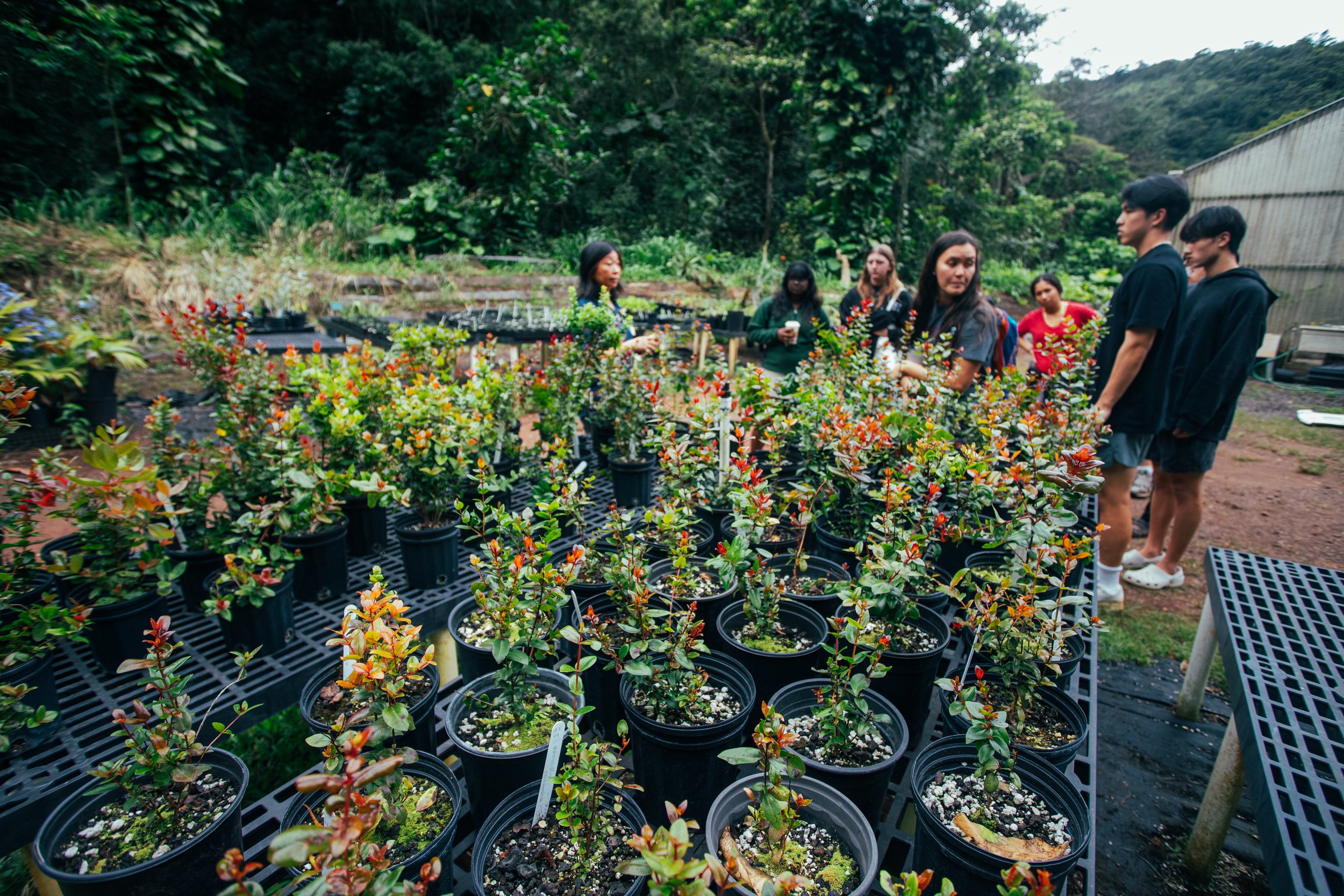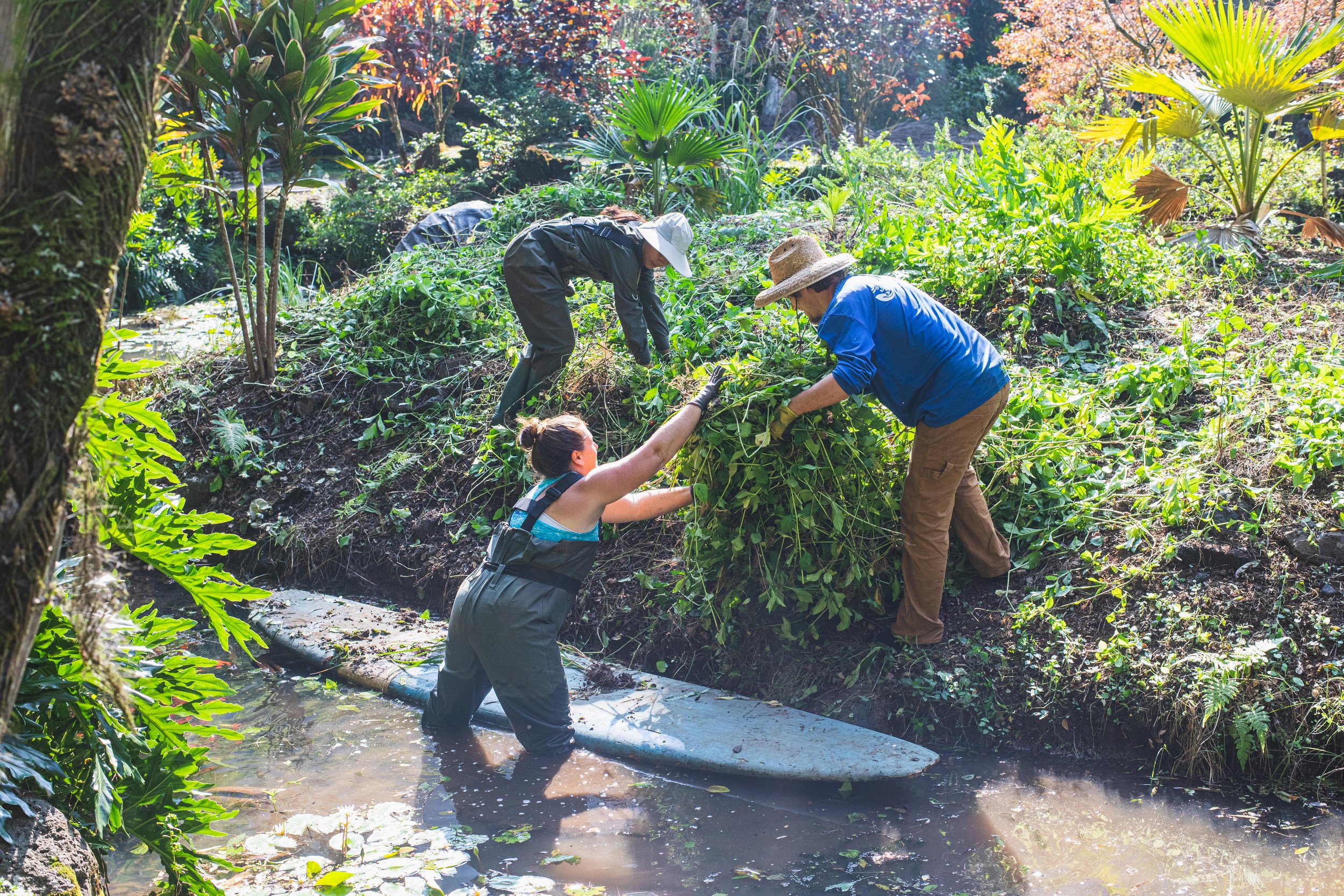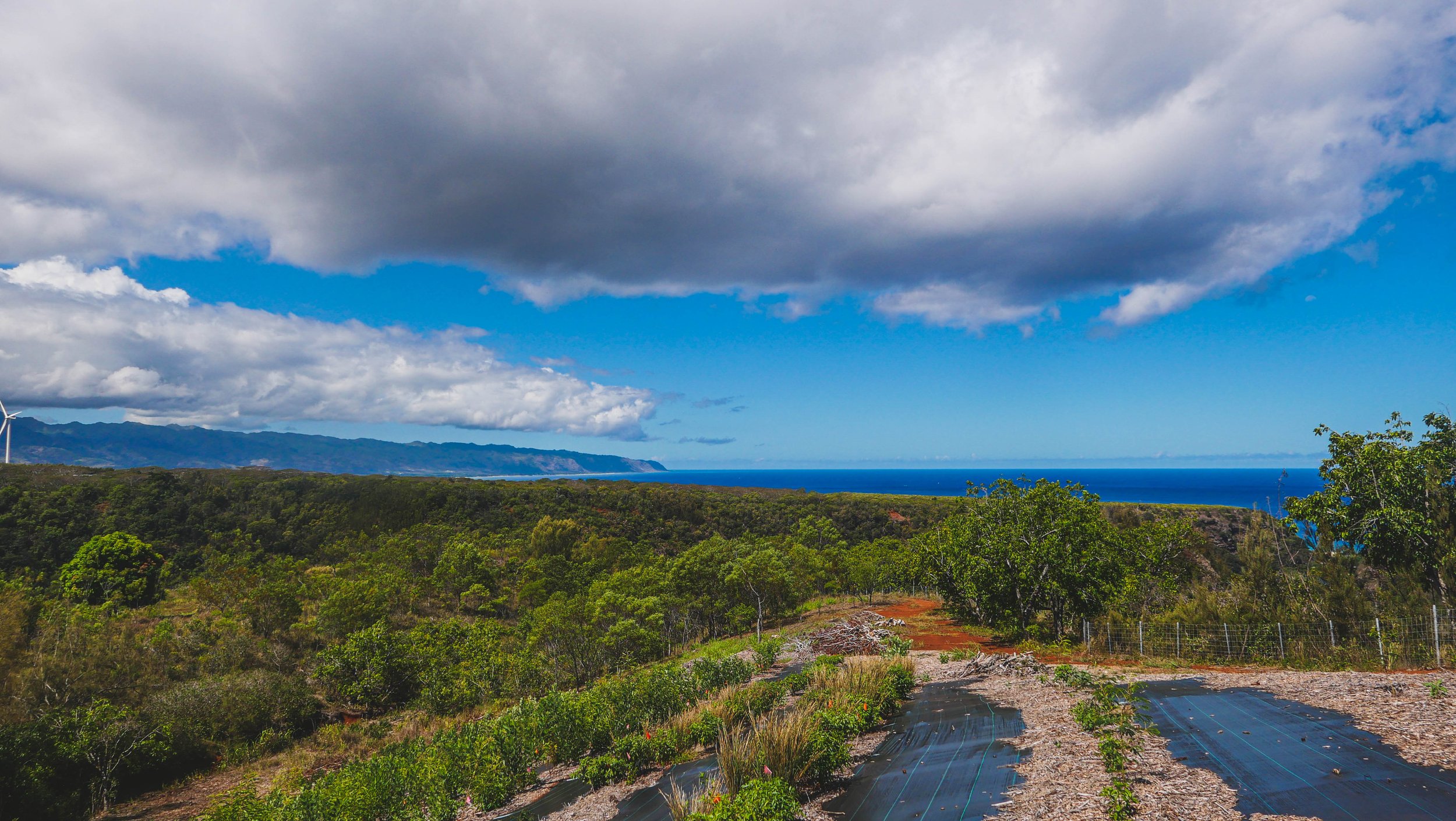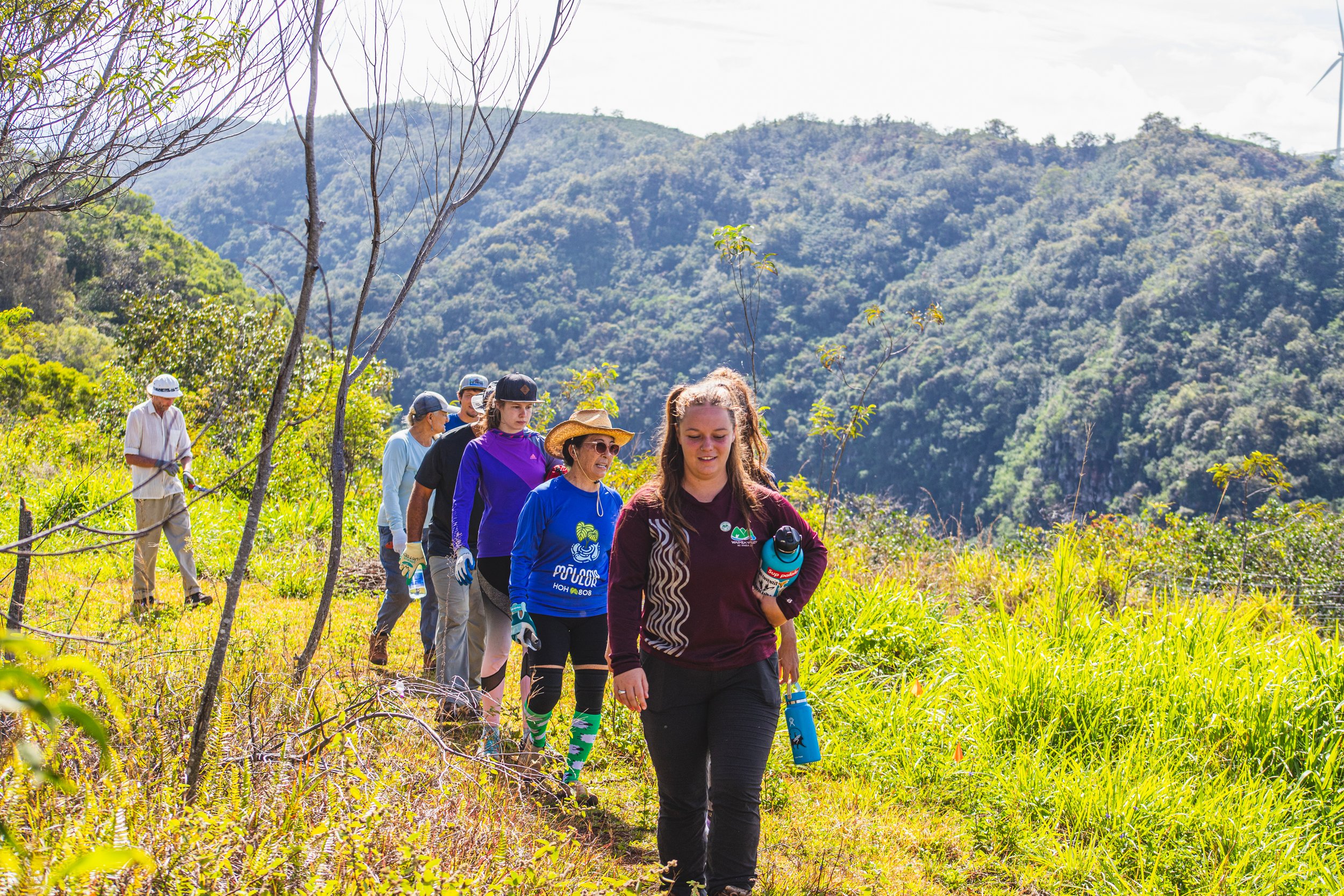
CONSERVATION
Conservation
Waimea Valley is a place where conservation of natural resources and culture go hand in hand. Careful monitoring and restoration of native ecosystems within the ahupua’a of Waimea Valley demonstrate how cultural uses and gathering can encourage stewardship from within the local community.
Our mission at Waimea Valley is to preserve and perpetuate the human, cultural, and natural resources. As stewards of the Valley, we are committed and active partners in the conservation and management of natural resources on a local and global scale. We will continue our commitment to protect and restore our ahupua’a (land division) for further generations.
Native FOREST RESTORATION
One of our conservation team’s key jobs is restoring the forests on Hiʻipaka’s land to their native flora and fauna. We grow native trees and plants in the nursery and take them up the hills to replace invasive trees that are harmful to the soil and habitat health. This also helps with our carbon offset program.
Ironwoods, for example, are highly acidic, and can out-compete native plants, leading to monocultures. The forests in the Valley contain native plant species lama, wiliwili, koa, ‘ohi’a ‘ai, ‘ohi’a lehua, and alahe’e, many of which have been planted by conservation.
Our two core forest restoration projects are focused on the 60-acre Kalahe’e Community Restoration Project and the 15-acre Waimea Mauka Native Forest Project. Both of these areas have been fenced to protect the native species from wild boar in the area.
Hui Hānai Ᾱina (Help Restore our Native Lands) Project
In an effort to assist the native forests on the ridges and slopes of Waimea Valley, the Conservation team and volunteers have been clearing invasive plants and planting tens of thousands of native Hawaiian plants. Several areas with lama, wiliwili, koa, ‘ohi‘a lehua, and alahe‘e have been identified as key restoration sites. Restoring the upland forests is known to enhance the watershed and therefore improve the water quality and quantity for the Valley. If you are interested in volunteering with this project, click here.
’ALAE ’ULA
The ’alae ’ula, Hawaiian Moorhen (Gallinula chloropus sandwicensis) is an endemic native species on the Endangered Species List. These amazing and secretive water birds give us a glimpse into the past and the types of birds that we would have seen in coastal areas of old Hawaii.
There are only about 500 of these birds left in Hawaii. Waimea is home to approximately 15 individual birds. Our population grows every year and the habitat expands into new areas of the wetland. Staff and volunteers work to maintain their habitat and monitor their progress.
This includes carefully maintaining and protecting the estuary in the front of the Valley, where several of these birds live and eat. Our conservation team work very hard to maintain the ponds and to combat invasive species like mongoose and cattle egret that prey on ʻalae ʻula babies and eggs.






Research Projects
In creating and sustaining partnerships with like-minded organizations, Waimea is part of a local movement toward land stewardship. Over they years we have welcomed environmental researchers from around the world to study and collect data in our ahupuaʻa.
In 2008 Waimea Arboretum Foundation in partnership with Hiipaka LLC received an Honored Institution Award for our participation in faithfully providing NOAA daily weather readings for 25 years! The daily readings submitted online to NOAA are the maximum, minimum, and current temperatures, plus 24-hour precipitation. Based on these data recorded, we are able to observe rainfall patterns and the weather at Waimea Valley since 1983.
Atlas of Hawaiian Watersheds & Their Aquatic Resources, Waimea River
C-MᾹIKI - Center for Microbiome Analysis through Island Knowledge and Investigation
Researchers from the University of Hawaii samples plants, soil, and captured local birds in Waimea Valley to study their microbiomes (before releasing them). What they found is that microbiomes share similarities across an entire ecosystem, instead of being unique to individual species. Read more about their findings here.
Effects of Herbivory and Drought on Common Native Plants
University of Hawaii, Dr. Kasey Barton
Hawaii VINE Project (Vertebrate Introductions in Novel Ecosytems)
This work explored how bird and rat behavioral variation (movement, predator avoidance, and competitive interactions) acts as selective drivers of variation in seed dispersal and recruitment across ecological gradients in Hawaii. Read more about the project here.
Introduced galliforms as seed predators and dispersers in Hawaiian forests
Samuel B Case, Springer Nature Switzerland
Leaf Litter Decomposition
University of Hawaii, Dr. Donald Drake
Species survey and influence of invasive species on native Hawaiian 'Ō'ōpu (freshwater gobi fish)
Tulane University, Dr. Michael Blum
University of Hawaii, Bradley Kaufmann
L. Kalai Ellis, Richard A. Gill, Walter Ritte



